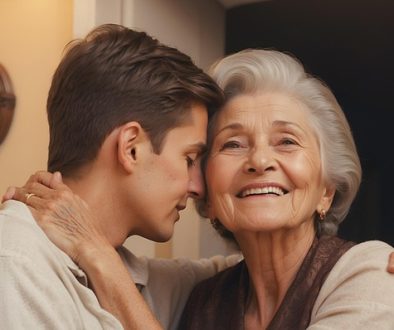Life-Care Plan: Where Do We Begin?
By Maureen Rulison
Caregiver Support and Resources, LLC
Planning for every part of the life journey is never easy. Many of us retire and think the planning’s done. But there’s even more to factor in a strong, comprehensive life-care plan that factors your (and/or your loved one’s) care needs and dignity through the end – and beyond.
Here at Caregiver Support and Resources, LLC, we build plans that empower care decisions to the right people – you and yours. The life-care plan isn’t just a means to “the end.” It’s a roadmap to prepare for unexpected emergencies, build financial security, and provide the comfort and LIFE WORTH LIVING to which we are all entitled.
A Great Life-Care Plan Has a Lot of Moving Parts
Numerous elements should comprise a life-care plan, which lays out what will be done, when, why and by whom. It factors everything that can – and should – happen. We’ve said before there should generally be 9 parts to a great plan, but each individual and family is different. (So if your life-care planning takes 15 extra parts, so be it!)
In a nutshell, this document spells out everything that needs to happen as care-partner teams navigate the uncertainties of advancing years, health conditions, financial and legal realities, and end of life.
Even though everything is clearly laid out, make sure the plan is flexible. Be sure to anticipate changing realities, needs and wants over time. Care partners and responsibilities may change. Unanticipated medical diagnoses may arise. Financial security can teeter on the brink.
In general, the following are strong elements to include.
1. Care-Partner Team
Let’s begin with the circle of support surrounding the person(s) receiving care. Members may consist of family, friends and professionals in the continuum of care (primary care physicians, specialists, mental health counselors, assisted-living administrators, etc.). The team may be expansive, or it may be a team of one.
The non-negotiable: the team must adopt a spirit of mutual cooperation and accept joint responsibilities. There are opportunities to give (and receive) care by everyone:
- A sister may tackle financial needs.
- A son may stop by to prepare meals and sort medications for the month.
- A neighbor may visit frequently for coffee breaks (aka wellness checks).
- A husband may assist with bathing and bedtime routines.
Your care-partner team may also include non-traditional and spiritual care methods. Some families prefer life-care plans that honor their religion and faith, with a clergy member or spiritual adviser assisting appropriate areas.
2. Medical Care
Health is the most important factor – even if it may be deteriorating or failing. Medical concerns can arise in good health and bad. Illness can derail even those who seem the most healthy.
Your life-care plan must factor anticipated health and dietary needs. These may vary person by person, year to year, month to month, or even day to day. So the plan must lay out what’s to happen in the status quo and when health matters inevitably change.
3. Financial & Legal Protection
Achieving a LIFE WORTH LIVING is so much easier when all the “loose ends” are handled. So let’s make one of the first things tackling the immense stress of financial and legal uncertainties. You want to know your “house is in order” to ensure legal control if/when the individual becomes incapacitated and protect assets for future generations.
Ideally, official documentation will be prepared well before “when the time comes.” It’s more than “who gets what” or who chooses to “pull the plug.”
Needs may include:
- Medicaid and VA planning (with asset protection)
- Estate planning
- Living will (or advance directive)
- Power of attorney
- Health care proxy
- Last will and testament
As always, get it in writing! Get it done early, when everyone has a calm mind about the future, less inhibited by reactionary biases.
4. Living Situations
Home is where the heart is, but that may not be the case if/when medical concerns worsen. A strong life-care plan defines where your loved one will reside, when and why.
It should have a Plan A and contingencies for both anticipated and unforeseen variables. For instance, Plan A may be that your Dad lives at home with your Mom, but Plan B might include options for Mom entering memory care when her dementia takes a turn, while Plan C mobilizes home-care resources for Dad remaining at home before moving to join her in Plan Z.
Moving to some sort of assisted living or advanced care isn’t always inevitable, but it is highly probable. More than 800,000 Americans reside in assisted living facilities – even more in advancing levels of skilled nursing. The trick is knowing when to make that call. When you or your loved one needs full assistance walking, bathing and toileting, that’s usually a good sign to go.
5. End-of-Life Care
We all owe God a death. That’s reality. But less than 40% of adults actually prepare for end-of-life care. And that’s a shame, considering it may be a prolonged, painful experience – even for the healthy.
Hospice care is a great resource for individuals with terminal illnesses expected to live six months or less, providing comfort and support on the journey to the end. For those expected to live longer in a debilitating condition, palliative care provides many of the same comfort services.
(Related reading: What’s The Difference Between Hospice & Palliative Care? And Don’t Wait for Important Conversations About Hospice.)
6. Person-Focused Care
It begins with the very language we use. Words are our most powerful tools. They can help or cause damage. Words can empower or place the care recipient in a weakened position. “Person-centered” or “person-focused” is the name of the game.
Referring to a person as a “care partner” rather than a “caregiver” is a more calming and equitable relationship. While in the common vernacular, the term “caregiver” implies authority. Similarly, calling someone a “patient” connotes placement and dependency versus a “resident” who directs their care.
7. Community Resources
Extending to the outer circles of the care-partner team and beyond, many communities have ample resources (if only one knows where to look). Great care is a team effort. Community care options, including professional agencies, may include:
- Home care
- Respite care
- Counseling
- Real estate
- Spiritual and faith-based care
- Living transitions and logistics
- Legal planning
- Even cleaning and cooking
In addition to part of our patient advocacy and life-care planning, we provide referrals to great resources in the Tampa and Clearwater, FL, areas.
8. Patient Advocacy
Which segues nicely to this point. Patient advocacy is another available resource for a well-rounded life-care plan. It’s your one-stop shop for EVERYTHING your loved one and care partners need.
Our loved ones will be faced with many important decisions. An experienced Patient Advocate will know each required step for your loved one’s physical, emotional and financial well-being. As a Board-certified Patient Advocate in the State of Florida, I work with care-partner teams to support every step of the care journey.
9. After Care
The end has come, and the family is grappling over the loss of a loved one. Whether your loved one passed in peace or struggled mightily, the death experience can be jarring for everyone involved. The emptiness and sorrow can be incredibly strong, especially for close family and friends. Sometimes only counseling can work through such powerful feelings.
Memorial services and other final arrangements, as well as fulfillment of financial and legal responsibilities should also be included in a life-care plan. Alongside our community partners, we provide direct after-care support and referrals after a death.
Let’s Build a Life-Care Plan for a Life Worth Living
As a professional life-care planner and a Board-certified Patient Advocate, I assist individuals and their care-partner teams every day. And then I come home to fulfill our life-care plan with my life partner/care partner, Brian. If you need help, Caregiver Support and Resources, LLC can help you from beginning to end. Email me at maureen@caregiversupportandresources.com.




